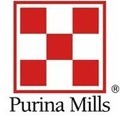 Purina Animal Nutrition provided tips for minimizing the stress of weaning at an industry seminar at World Pork Expo. Presenters shared information on employee empowerment and young pig nutrition, crediting nursery management and the weaning transition as key drivers to industry success.
Purina Animal Nutrition provided tips for minimizing the stress of weaning at an industry seminar at World Pork Expo. Presenters shared information on employee empowerment and young pig nutrition, crediting nursery management and the weaning transition as key drivers to industry success.
“Early pig management sets the stage for Full Value Pigs, with the post-weaning period playing a big role in the process,” said Becky Bierlein, young animal specialist for Purina Animal Nutrition. “The biggest stress on a pig’s life is moving him or her from the sow to the nursery. Your toolbox is your support system in minimizing that stress, so load it to the gills.”

Attentive management is especially important post-weaning due to the young age of the piglets.
“We need to remember that weaned pigs are still babies when they arrive in the nursery,” added Sarah Probst Miller, DVM, creative director and president of AgCreate Solutions, Inc. “These 3-week old pigs are the equivalent of a 2-year old human. They need more intensive care and people looking after them more intensively in the first 3-5 weeks in the weaning barn because that’s when they are more likely to fall behind or get sick.”
To minimize the stress of weaning, a producer’s post-weaning toolbox should provide: employee education, a healthy environment and quality hydration and nutrition to young pigs.
Employee empowerment
A successful post-weaning toolbox begins with educated employees, said Probst Miller.
“At the end of the day, the pigs don’t raise themselves,” she said. “We need people who are committed to providing good care and who know the importance of their daily actions. When our teams have the tools and knowledge to be successful, we become ordinary people doing extraordinary things.”
To empower employees, Probst Miller encourages team leaders to educate their teams on the industry and the importance of their actions, outlining a nursery care process with the following tips:
- Clearly outline day-in and out responsibilities;
- Emphasize why actions are important;
- Verify completion of tasks.
Environment
“The environment for the weaned pig should be comfortable to keep stress low,” said Dan McManus, swine specialist for Purina Animal Nutrition. “Evaluate and adjust temperature, ventilation and humidity routinely.”
- Temperature: Start young pigs at about 82 degrees Fahrenheit. Transition temperature down to roughly 65 degrees Fahrenheit over a seven week period.[1]
- Air quality: Maintain ventilation to keep air fresh. Well-functioning ventilators help remove undesirable compounds, including ammonia, dust and pathogens.
- Humidity: Relative humidity should be maintained between 50 and 60 percent to prevent bacterial and viral growth.[2]
Hydration
“When I work with producers to create a constructive care plan for the nursery, our first priority is to get the pigs drinking,” said Bierlein, explaining that mortality rates are more prevalent if a pig loses 15 percent of its water weight.
Industry research has shown that only 51 percent of pigs consume water 25 hours post-weaning due to unfamiliarity with surroundings and the stress of movement.[3] Providing gels and electrolytes at weaning can help improve hydration levels.
“I put the gel on mats in every pen at weaning,” Bierlein said. “It provides hydration and helps the pigs learn to eat as a group. It’s a stimulation practice to get the pigs up and eating together. I put the gel in front of the pigs every day after weaning and they often are onto the dry pellet within five days.”
Bierlein also recommends providing electrolytes to pigs in times of stress.
“Electrolytes work to keep hydration levels up and minimize that stress at weaning by providing necessary nutrients (sodium, chloride, potassium, calcium and magnesium) to the pig,” she said. “I put 5-gallon buckets with electrolytes in each pen for the first 5-7 days post-weaning. Electrolytes can also be fed through medicators very easily.”
Nutrition
“When we’re weaning young pigs, we need to feed very digestible milk products – both before and after weaning,” said McManus. “The nutrition we provide to young pigs should be highly palatable.”
Creep feed prior to weaning and the first feed post-weaning should include a complex combination of nutrients with a variety of amino acids, probiotics and neutraceuticals. This combination helps to stimulate gut areas and strengthens immunity.[4]
“Budget pigs by size and mat feed post-weaning to stimulate intake,” he added. “Then do a health check every day on every pig to make sure they are not falling behind.”
Managing the Challenged Pig
The presenters agreed that nursery nutrition and management is even more critical for Challenged Pigs – those impacted by illnesses, early weaning and transport.
“For Challenged Pigs, the basics are very similar to normal pigs; only, if we make mistakes, they’re magnified,” said McManus. “We need to provide even more attention and care to Challenged Pigs. Have a plan in place that accounts for environment, nutrition, hydration and management – both for normal post-weaning and for Challenged Pigs.”
[1] McManus, Dan. “What’s your pig’s potential and what’s it going to cost?” World Pork Expo presentation. 5 June 2014.
[2] “What is the proper thermal environment for nursery pigs?” University of Wisconsin-Extension. http://www.extension.org/pages/40233/what-is-proper-thermal-environment-for-nursery-pigs#.U81S7rHpVGk. 21 July 2014.
[3] Varley and Stockill. 2001.
[4] “How to minimize nursery fallouts.” Pork Magazine. Nov/Dec. 2013.
September 17, 2014 - Purina



